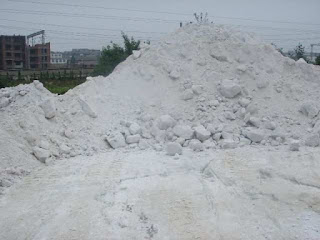Size Control in Crushing and Grinding Circuits
Crushing circuits - open screening
•
Screening ahead of a crusher avoids packing
•
Less wear in the crusher
•
Higher total capacity
• The
screening media is “controlling” the product in two dimensions. No “flaky
shortcuts”.
Crushing circuits - closed screening
• The
screens are lowering the capacity
•
Calibration of the product is improved
•
Better cubical shape
•
Higher reduction ratio
Grinding circuits – screening
•
Used for “trapping critical sizes” in AG - SAG circuits (1)
•
Used for taking out size fractions from AG circuits for pebble grinding (1)
•
Used in circuits with heavy minerals – avoiding over grinding (fine screening) (2)
•
Screens being static (fixed cut point) are not too tolerant to changes in
product size, causing variations in circulating loads.
•
Mechanical damage or clogging of screening media can disturb operation.
Grinding circuits – classification
•
Classifiers being dynamic (floating cut point) are more tolerant to changes in product
size as the cut point is moving with the changes
•
Cyclones, being most common, are effective as classifiers at cut points below 200
microns (1)
• Spiral classifiers are effective as
classifiers at cut points up to 800 microns. For the coarse fraction solids up
to 50mm (2”) can be removed by the spiral.
•
Spiral classifiers and hydrocyclones
can be used complementary if cut point is coarser than 200 microns. (2)
Dry classifier system
A typical dry
classifier system is shown below. Due to the difference in viscosity between
water and air the installation volume is quite different.
1. Grinding mill(dry type ball mill)
3. Cyclone for
product recovery
4. Main fan for
circuit air flow
5. Dust collector for cleaning of exhaust
air
6. ”In circuit
heater” for moistures feed
•
Normally used for mineral filler production
•
Voluminous installation due to low solids content per m3 of
air
•
Dust collector needed for bleed - off air
•
Sensitive to moisture
• Low
wear rate






评论
发表评论